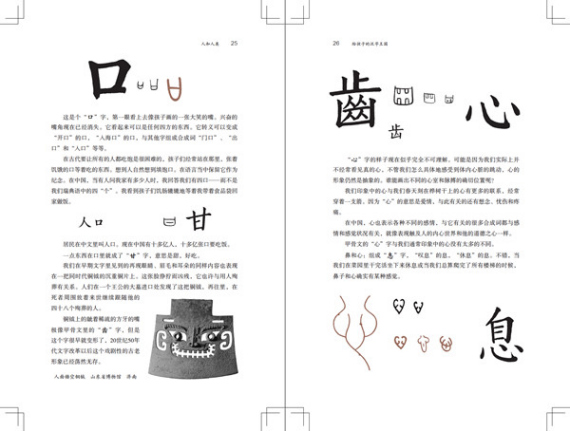
Swedish Sinologist Cecilia Lindqvist's Characters Kingdom explores Chinese characters and their development. The book has been translated into 14 languages, and a new Chinese edition (above) specifically for children came out recently. (Photo provided to China Daily)
Lindqvist's interest in China was first sparked at the age of 5 or 6, when her mother showed her an oiled-paper umbrella brought to Sweden by a friend from the Far East.
Later, during a nine-year period spent at university, she attended lectures by famous Swedish Sinologist Bernhard Karlgren on ancient Chinese philosophers, such as Confucius and Laozi.
Karlgren often showed his students how a Chinese character was written on oracle bones and bronze ware in ancient times, and how the characters had developed through history.
Karlgren's strong interest in the structure of characters influenced Lindqvist greatly.
So, in 1961, when Lindqvist's husband was posted at the Swedish embassy in China, she traveled along and enrolled in Peking University.
At the university, her Chinese teachers told her to memorize everything, instead of telling her why, so she tried to seek solutions herself.
However, her life changed when she started learning to play the guqin at the Beijing Guqin Research Association in a courtyard beside the Huguo Temple.
There were 11 masters there and she was the only student because at that time the guqin was seen as outdated.
Recalling those masters, she says: "They were the most elegant and cultured people I've ever met."
In 1962, Lindqvist returned to Sweden as her husband's posting in China ended.
But, before she left - in order to continue studying the guqin in Sweden - she bought a recorder from Hong Kong and the 11 teachers recorded 23 pieces of guqin music for her.
They also gave her a guqin from the Ming Dynasty (1368-1683) because it was impossible to buy one anywhere.
In 1971, Linqvist started teaching Chinese at a high school in Sweden.
Like her teacher, Karlgren, she told the students about the origin, development and structure of Chinese characters by showing them pictures of oracle bones and bronze scripts.


















































